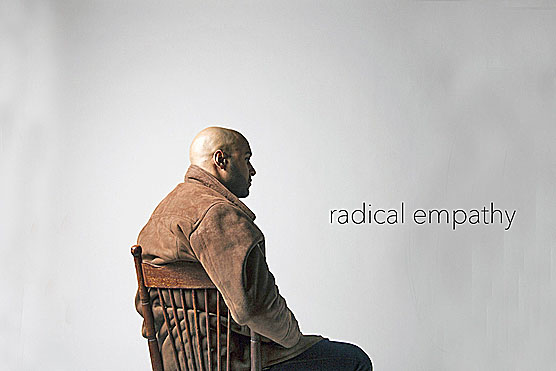Seguino’s Radical Empathy a plea for understanding and compassion
A question posed by philosopher Kwame Anthony Appiah sparked inspiration in Stephanie Seguino, an artist and economist. “What do we owe strangers by virtue of our shared humanity?” Appiah asked in his book, “Cosmopolitanism,” which lead to Seguino’s Radical Empathy exhibit. Seguino has shown this exhibit at various locations around Vermont including her most recent exhibit at Northern Vermont University on the Johnson campus. Seguino’s work was on display in the Julian Scott Memorial Gallery in Dibden. This exhibit consisted of photographs taken by Seguino of various black men.
While the question asked by Appiah inspired Radical Empathy, Seguino’s son was her inspiration to begin photographing black men and discussing racism along with policing. “The death of our inability to see the humanity of black men really became so deeply poignant in our lives, and so it came upon me to do this project,” said Seguino, after she discussed the inspiration brought to her from her son. She explained that upon her son turning 12 it seemed as though there was a curtain that came down and people failed to see the beauty that he had within him.
He began to come home from school with stories about hate crimes that had happened at school or around their community. He had been in 7th grade and was telling her about how a white student and a black student got into a disagreement and the teacher ended up only sending the black student to the office. “There is a certain violence that happens to kids when they see injustice,” said Seguino. She explained that the impact had on her colored son gave her the needed passion to run with this project.
This exhibit was created as a way to bring conversation to racism and policing. “The problem with racism is a white person’s problem,” says Seguino. She talked about how as a society we are quick to overlook the problem of racism.
“People will recognize that, yes, maybe this happened. But they say that the cause was not race because they don’t really want to believe that there is racism.” We are able to see the problem in itself but we don’t believe that it is racism.
“We all need to engage in this conversation,” Seguino said. She sees racism and issues created around racism as a way for Vermont to take initiative and be the progressive state that people think of us as. She says that this is a great opportunity for us to start the conversation around racism and policing in order to begin the restorative process.
“The beauty with photography is it helps us to sort of dialogue about who we are, where we are, where we come from and where we’re going but also our relationships with each other,” Seguino said. The creation of this project allows a safe space for men of color to come and have their stories be heard. Seguino says that she sometimes worries that her being a white person creates an unintentional bias. She knows, however, that as the mother of a black man it allows them to feel a sense of comfort when opening up to her.
Photographs displayed in this exhibit ranged from portraits of men to pictures of them sitting in antique chairs facing away from the camera. She explained that there was little to no coaching done by her when it came to pose for the photographs. She said that she would take a picture mid-conversation when she felt an expression or gesture was made that had a powerful effect on the person that was looking at it.
“We read a lot from people’s faces and when we see them from the back, we don’t have any information except our own preconceived notions and we need to project that,” Seguino says. She explained that the photographs that were taken from behind the men were an attempt at showing societies preconceived notions and showing the viewers the things that they think or feel initially.
Seguino said the photographs taken from portrait stance are used to re-humanize black men and allow people looking at the pictures to feel a sense of connection to them. Seguino realized that, as humans, we recognize common facial expressions which lead to a greater feeling of connection as a society.
She spoke about the possibility of a book being composed with the stories of the men whom she photographed as another way to spark conversation. She feels that having a black son allows her the knowledge and empathy when photographing these men. She explained that she hasn’t received much negativity with this project and that she has gotten a rather large age variety showing up to her events.



